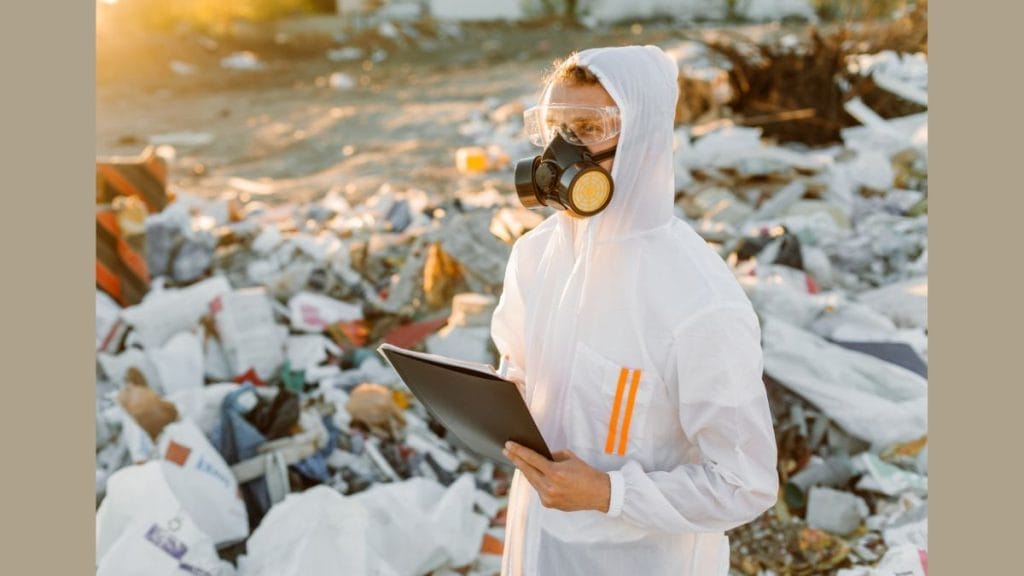Chennai (Tamil Nadu) [India], November 2: In today’s rapidly evolving industrial landscape, the production and consumption of goods have reached unprecedented levels. With this surge in economic activity comes a consequential byproduct – industrial waste. We, as industry experts, recognize the pressing need to unravel the intricacies of industrial waste to facilitate informed decision-making and sustainable practices. Through this detailed guide, we delve deep into the realm of industrial waste, examining its sources, types, impacts, and the strategies employed to manage it effectively.
Unveiling the Origins: Sources of Industrial Waste
Industrial waste stems from a multitude of sources within the manufacturing and production processes. These sources span across various sectors, including manufacturing, construction, mining, and energy production. The waste generated can be categorized into two primary types: process waste and non-process waste.
Process waste is generated during the production process itself. This includes scraps, trimmings, defective products, and byproducts that arise during manufacturing operations. Non-process waste, on the other hand, encompasses materials like packaging, plastics, and chemicals that are used in industrial processes but do not directly contribute to the final product.
The Spectrum of Industrial Waste: Types and Varieties
Industrial waste is a diverse entity, comprising various types based on its composition and characteristics. Some common types of industrial waste include:
1. Hazardous Waste
Hazardous waste constitutes materials that pose a potential threat to human health and the environment due to their toxic, flammable, or corrosive nature. This category encompasses chemicals, solvents, heavy metals, and radioactive materials.
2. Non-Hazardous Waste
Non-hazardous waste includes materials that do not possess immediate threats but still require proper disposal. This can range from packaging materials and paper waste to construction debris and discarded equipment.
3. Organic Waste
Organic waste comprises biodegradable materials, such as food scraps and plant matter. While organic waste can degrade naturally, its accumulation can lead to methane emissions, a potent greenhouse gas.
4. E-Waste
Electronic waste, or e-waste, consists of discarded electronic devices and components. With the rapid advancement of technology, e-waste has become a significant concern due to its complex composition and potential environmental impact.
The Ripple Effect: Environmental and Societal Impacts
The ramifications of inadequate industrial waste management reverberate through ecosystems and communities. Improper disposal of hazardous waste can contaminate soil, water bodies, and air, endangering the health of humans and wildlife alike. The unchecked release of pollutants can lead to long-term ecological damage and compromise the quality of life for communities living in close proximity to industrial sites.
Furthermore, the mounting accumulation of non-hazardous waste strains landfills and exhausts valuable natural resources. The indiscriminate dumping of waste contributes to deforestation, pollution, and depletion of ecosystems, underscoring the need for conscientious waste management strategies.
Pioneering Responsible Management: Strategies and Solutions
1. Waste Minimization and Source Reduction
The first line of defense against industrial waste is waste minimization. By implementing strategies to reduce waste at its source, industries can curtail the volume of waste generated. This involves optimizing production processes, adopting lean manufacturing principles, and reevaluating packaging methods.
2. Recycling and Reuse
Recycling and reusing materials form integral components of sustainable waste management. Industries can identify materials suitable for recycling and establish robust recycling programs. Reusing materials, such as packaging and containers, not only reduces waste but also conserves resources.
3. Hazardous Waste Management
The handling of hazardous waste demands meticulous attention. Industries must adhere to stringent regulations for the proper storage, transportation, treatment, and disposal of hazardous materials. Collaborations with licensed disposal facilities are essential to ensure compliance.
4. Technological Innovations
Emerging technologies play a pivotal role in revolutionizing waste management. Advanced sorting technologies, waste-to-energy systems, and bioremediation methods are examples of innovative approaches that enhance waste recovery and reduce environmental impact.
Charting a Sustainable Trajectory: The Way Forward
As the industrial landscape evolves, so must our approach to waste management. The urgency to address industrial waste is not only a regulatory obligation but also a moral imperative. By prioritizing waste reduction, adopting eco-friendly technologies, and fostering a culture of responsible consumption, industries can pave the way toward a greener, more sustainable future.
Examples from Around the World
Examining waste management practices worldwide offers valuable insights. For instance, in Sweden, the practice of burning waste for energy has reduced the country’s reliance on fossil fuels. Japan has implemented stringent recycling policies, leading to efficient resource utilization. These examples showcase the effectiveness of different approaches to industrial waste management.
FAQ: Clarifying Key Concepts
Q1: What is industrial waste?
A1: Industrial waste refers to the byproducts, residues, and discarded materials generated during manufacturing and production processes across various industries.
Q2: Why is proper industrial waste management important?
A2: Proper industrial waste management is crucial to prevent environmental pollution, protect human health, conserve resources, and ensure sustainable development.
Q3: How can industries contribute to effective waste management?
A3: Industries can adopt strategies like waste minimization, recycling, and embracing technological innovations to contribute to effective waste management.
Q4: What role does government regulation play in industrial waste management?
A4: Government regulations establish guidelines for proper waste disposal, encourage responsible practices, and impose penalties for non-compliance.
Q5: What are some innovative industrial waste management technologies?
A5: Innovative waste management technologies include waste-to-energy systems, advanced sorting methods, and bioremediation techniques.
Conclusion
In conclusion, industrial waste stands as a complex challenge that requires concerted efforts from industries, regulatory bodies, and society at large. As we navigate the industrial landscape, it is incumbent upon us to prioritize responsible waste management practices. By embracing waste reduction, recycling, innovative technologies, and regulatory compliance, we can mitigate the environmental and societal impacts of industrial waste. Through collective action, we can forge a path toward a sustainable future, where industry and ecology coexist harmoniously.





